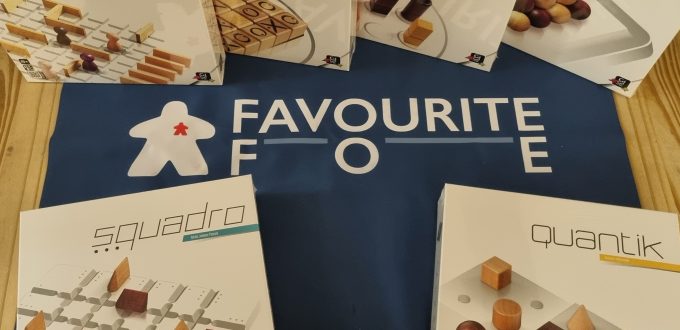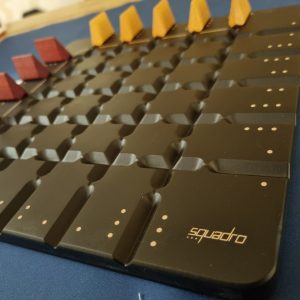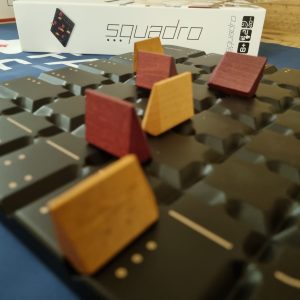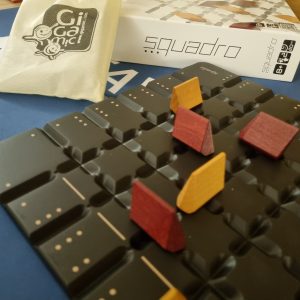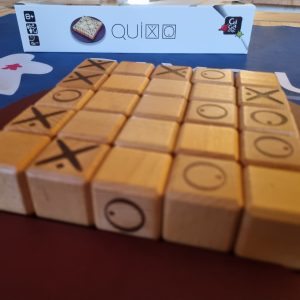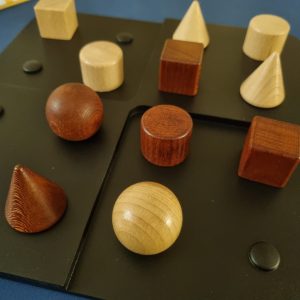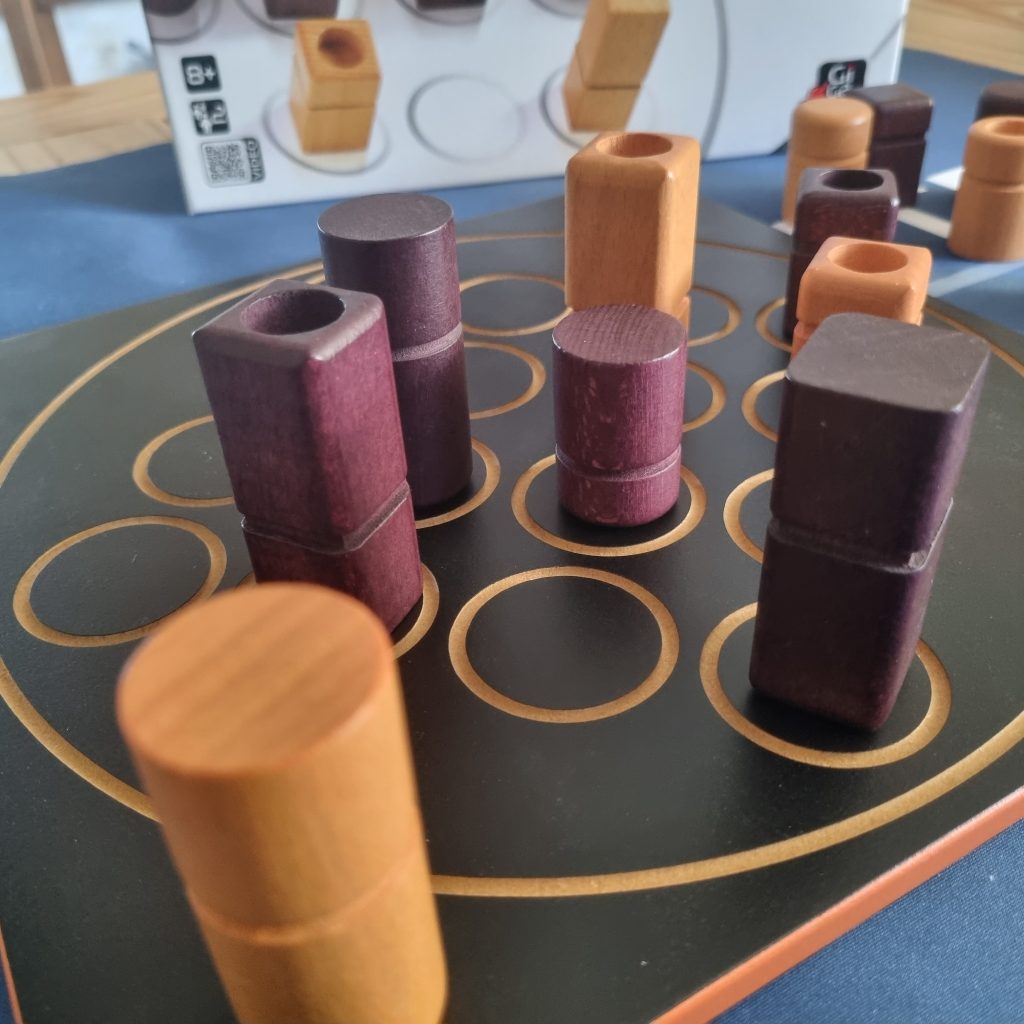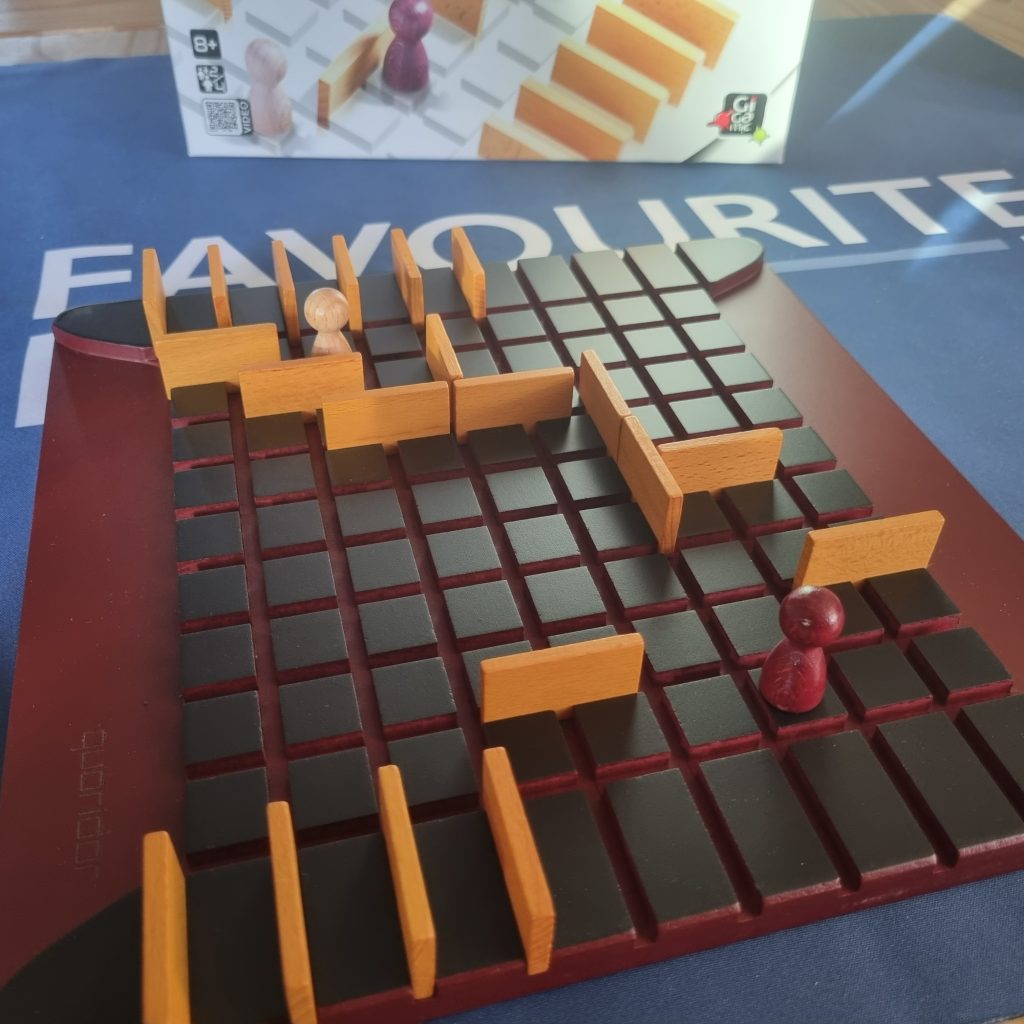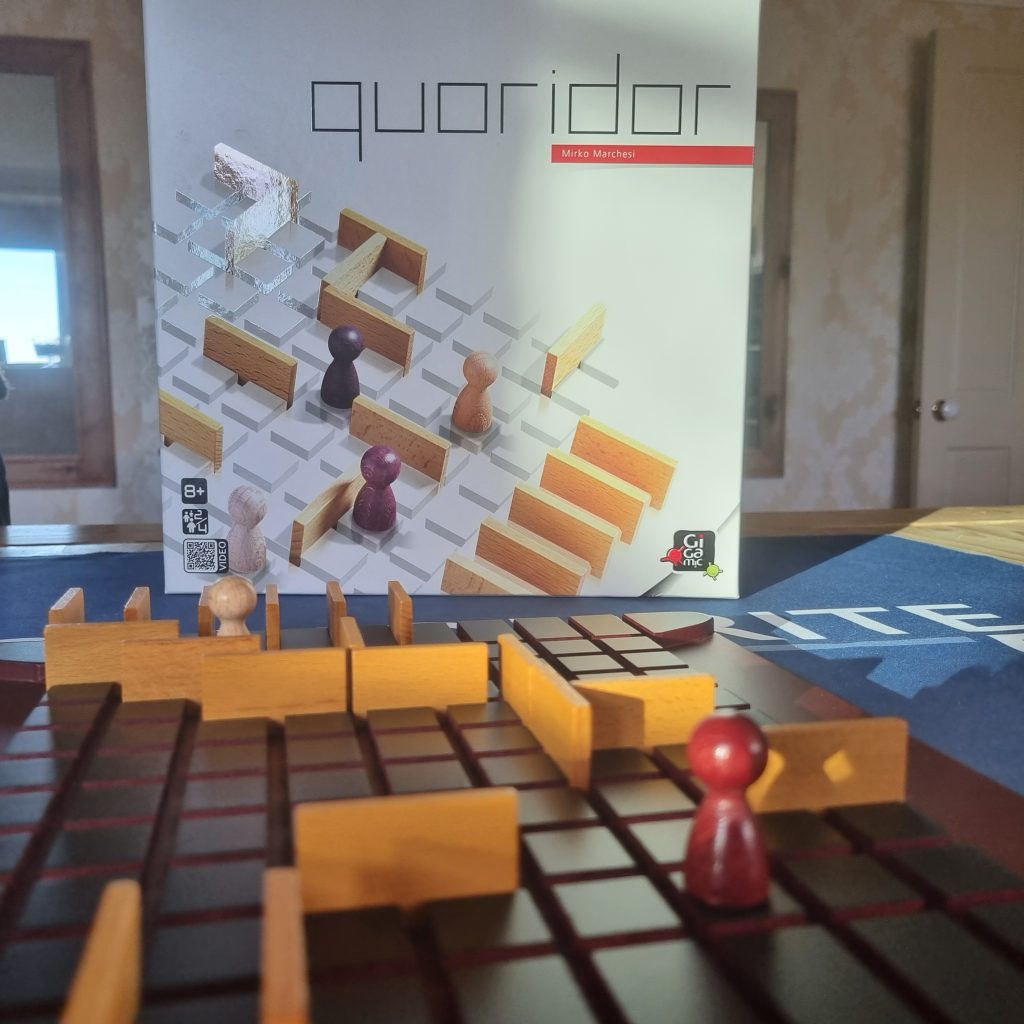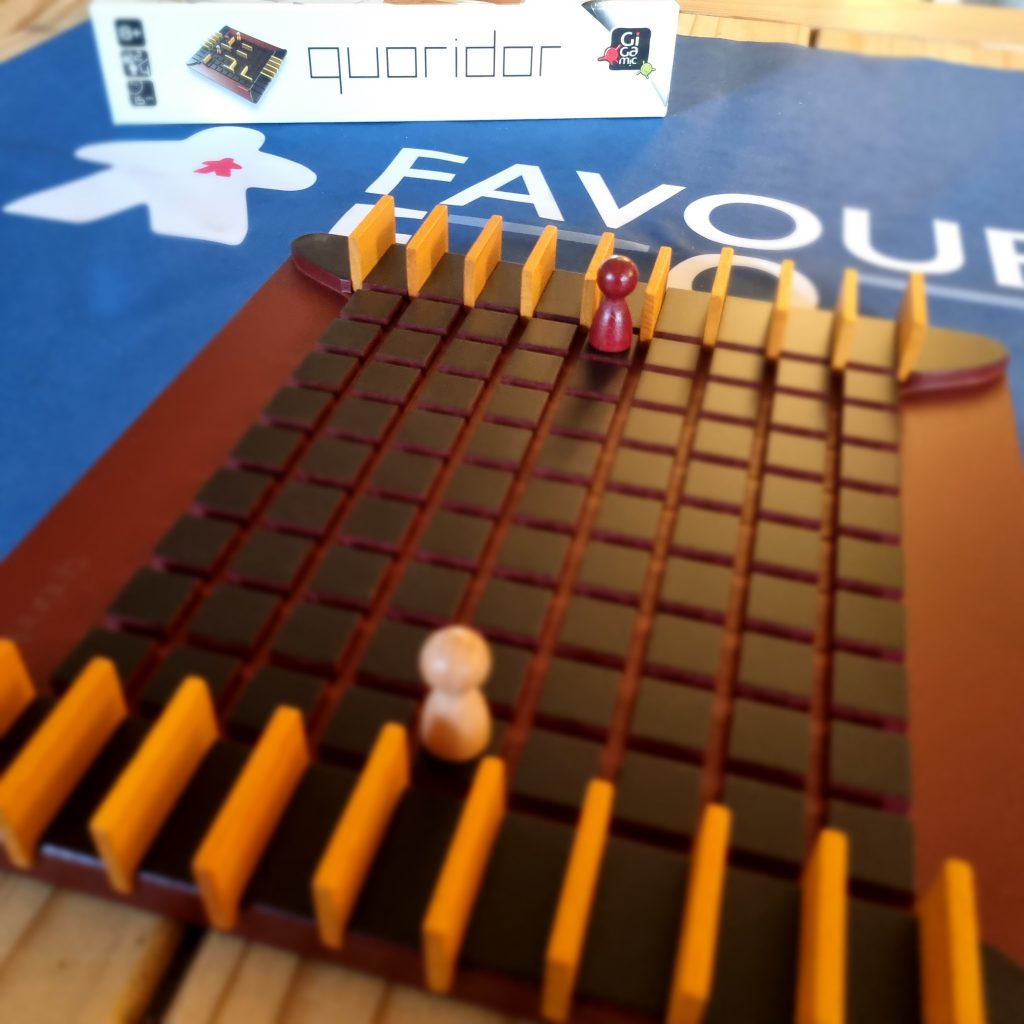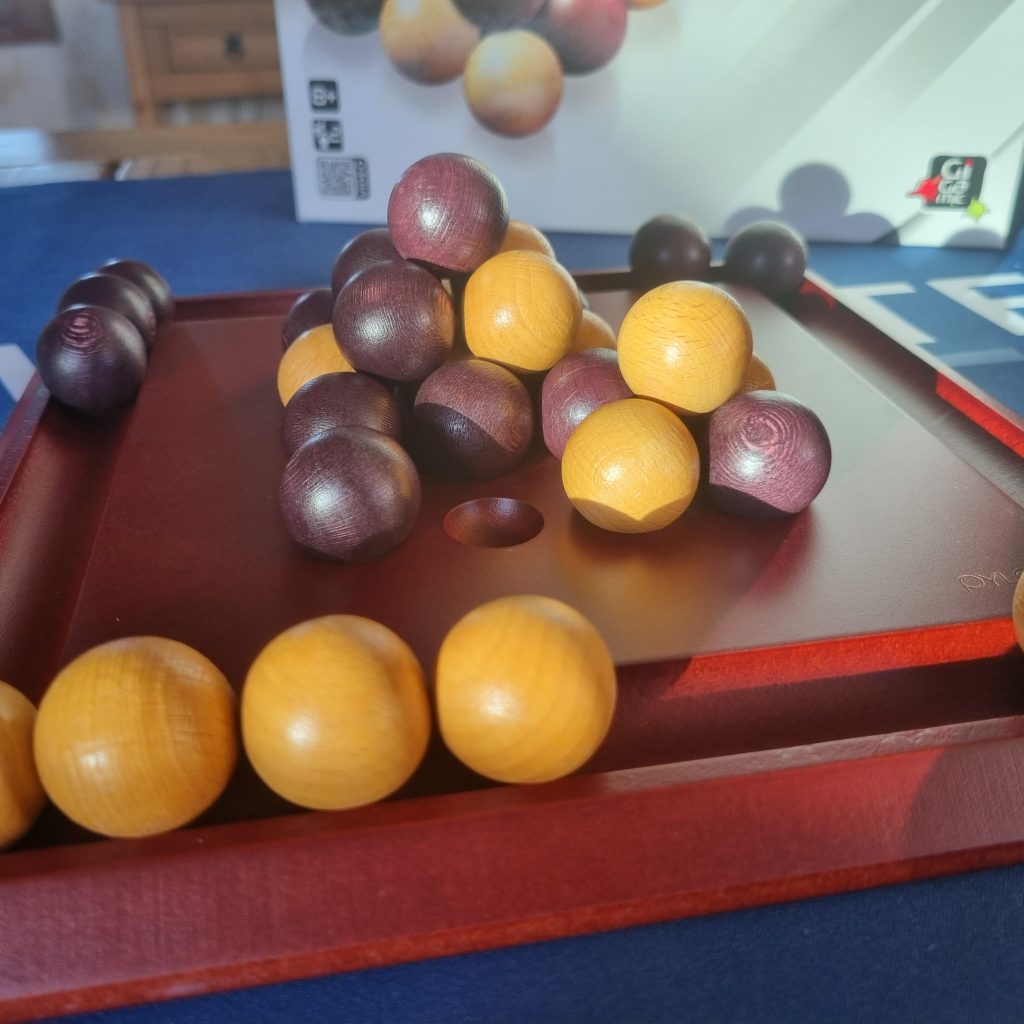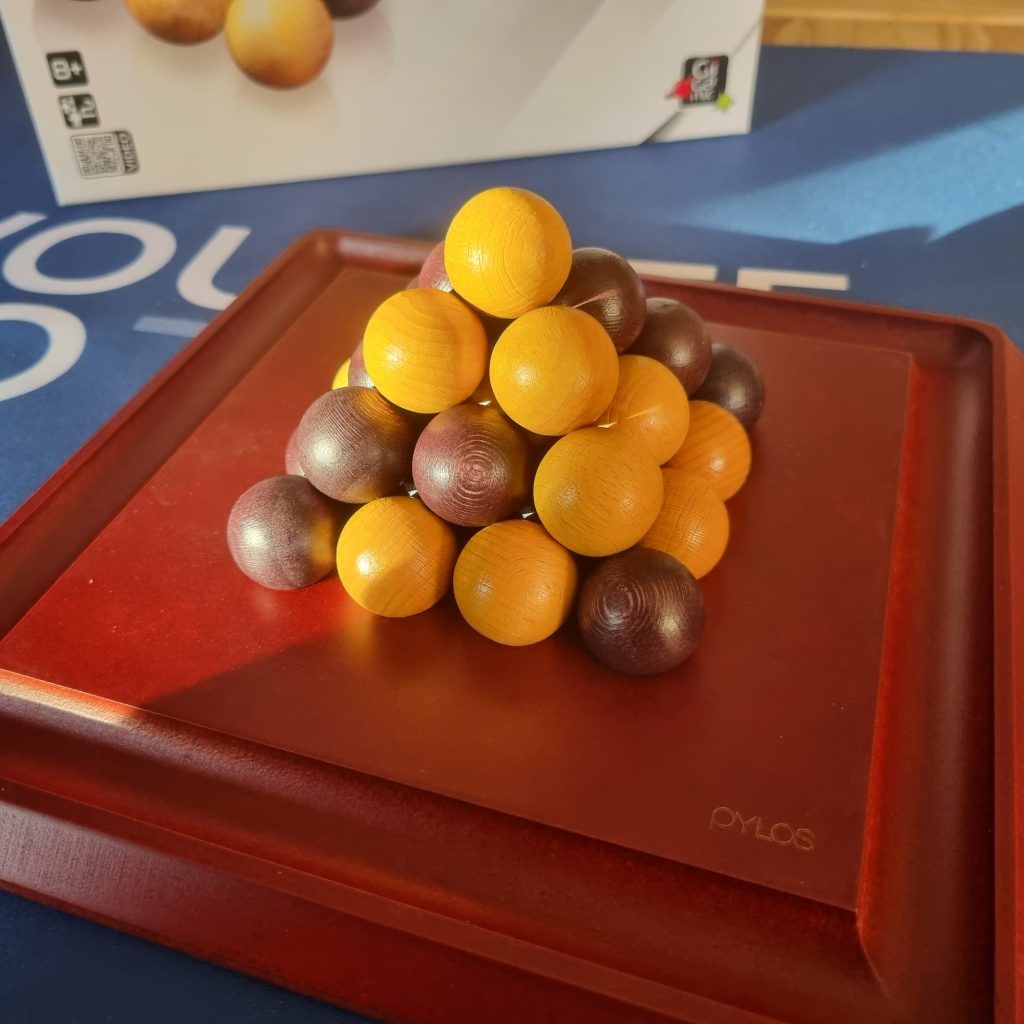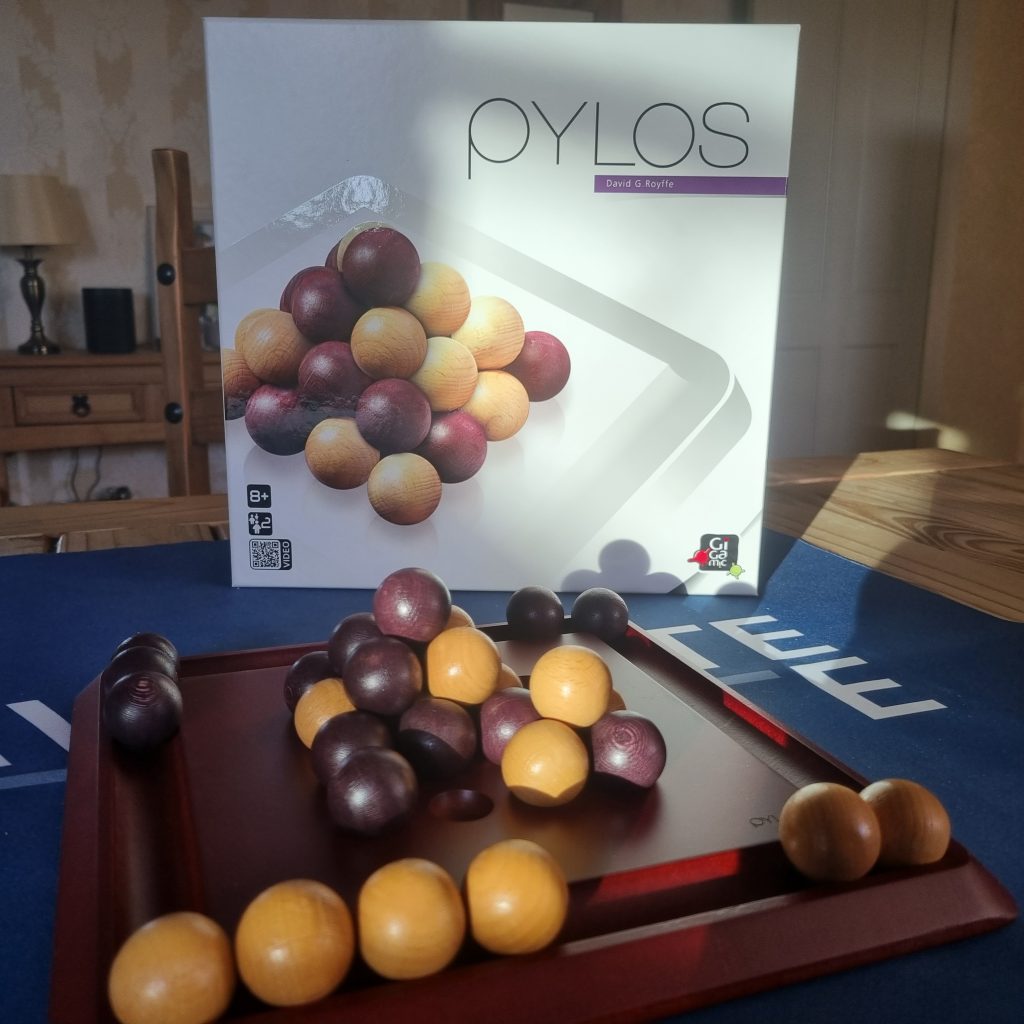Hachette Board Games UK are bringing the Gigamic Abstract Strategy range to tables everywhere! Part game, part sculpture; these titles are a feast for the eyes, hands, and mind!
Pylos, Quarto, Quantik, Quixo, Quoridor, and Squadro, What do these 6 games have in common besides the fact they are (1) abstract strategy games, (2) published by Gigamic, (3) simple to learn, and (4) only take around 5 – 20 minutes to play? No? It’s okay, I’ll tell you.
Each one is a beautiful, tactile, hearty, wooden game. They are in fact games on the verge of being sculptures. And not that any of us actually need a reason to keep our games out. But, if you’re looking for one, these are most definitely it.
With different objectives, playing styles, components, and tactical nuances, this is a collection that feels as good in your hand as they do making your mind work. None take very long to play, but they are time well spent. Like a metronome or Newton’s pendulum, you won’t be able to help yourself when you see the pieces; you’ll want to touch them. You’ll need to move them. But which one will you start with?
Now you might be able to decide on just one, but I’ll wager that you’ll be adding more before you are finished reading!
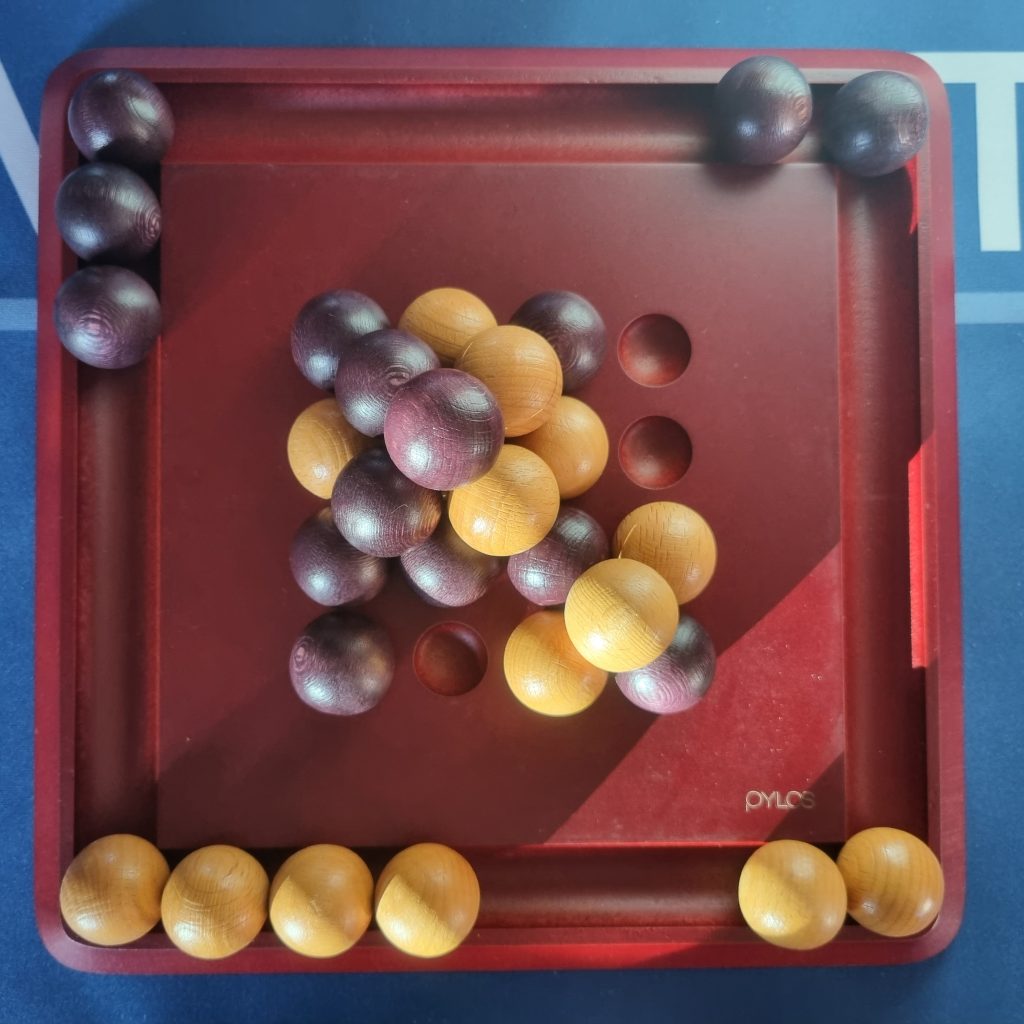
Pyramids…….Piles of Spheres……..Favouritefoe lost every game…..I can see where the name PYLOS might well have come from!
Nevertheless, surely a game I like playing even if I lose is a marker of its success? And without doubt this is one I lose a lot, but still want to play again.
In the game, there is a top quality wooden board with a grid of 4×4 indents. Both players have 15 spheres, and the object of the game is to be the player to place their colour sphere on the very top. Sounds like a straightforward race to the summit.
But, not so simple! Every time you create a square of your own colour, you get to either (1) move one or two of your own spheres (which aren’t supporting any others) back into your reserve or (2) somewhere else on the grid. If you create a mixed square, you can take one of your spheres from somewhere else on the board and stack it on top to form the next level, locking the pieces in underneath.
As well as being visually stunning, this is a fast playing, thinky, tactile game with advanced and easier variants included. Rolling the smooth wooden spheres around in my hands definitely helps take the sting out of being thoroughly bested by my opponent!
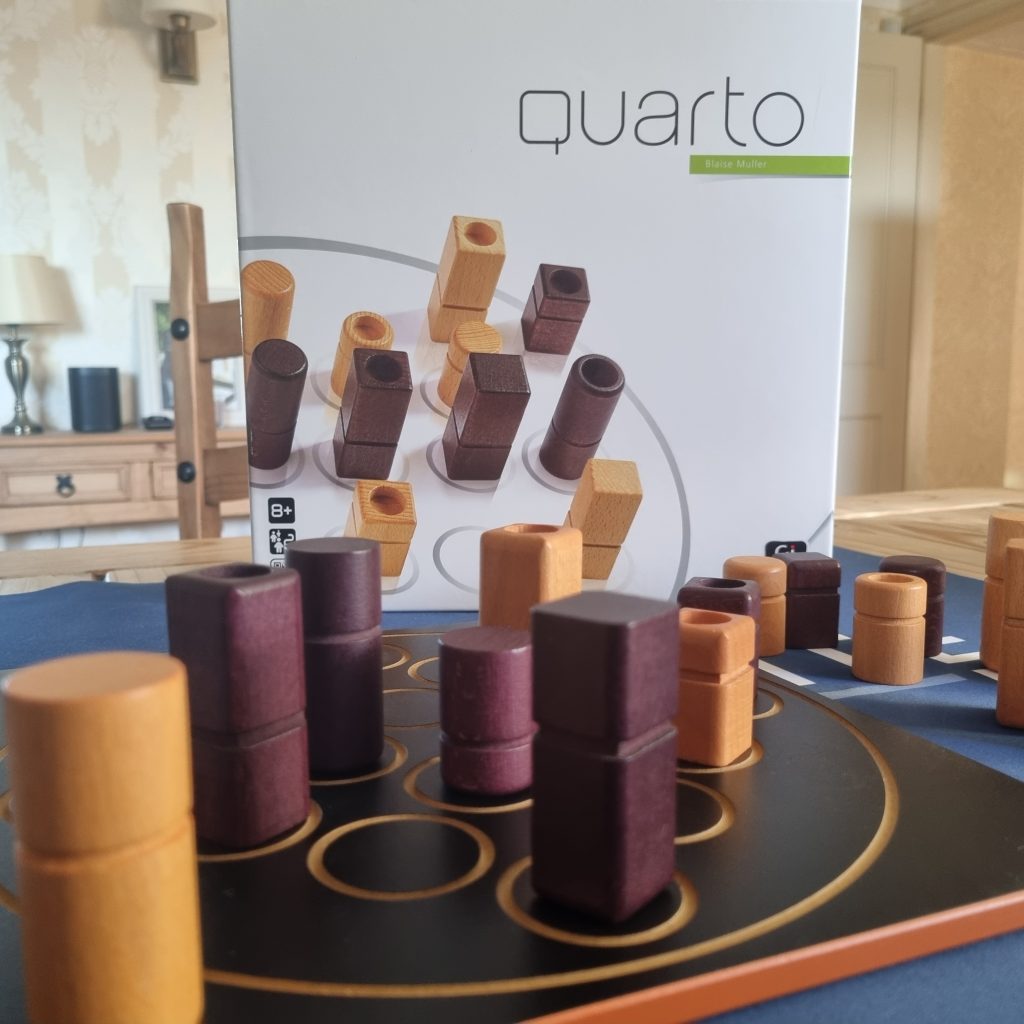
At the risk of sounding like a broken record, Quarto is another chunky, tactile, wooden beauty. And once again it’s a fast playing strategic little number for 2 players with a lovely board and just-want-to-pick-up pieces.
Instead of building up, however, you are laying 4 of them out in a row within the circle of permitted places. 4 pieces with at least one attribute in common in fact; tall/short, dark/light, hollow/solid, rounded/straight.
But, and here’s the kicker; every turn your opponent chooses which piece you lay! Strategic sabotage abounds in this one as you watch your almost completed line become compromised by the very piece you handed your opponent.
Just don’t forget to shout “QUARTO” when you synch that sweet fourth spot. If you don’t, your tactics will be for nothing as your opponent gets to steal your victory for themselves! I make silly mistakes in this game which cost me dearly – my opponent never fails to take advantage of my board blunders. It’s also definitely a game where players who can think ahead and quickly change up their tactics have the advantage. Nevertheless, it is a novel and fun puzzle to play!
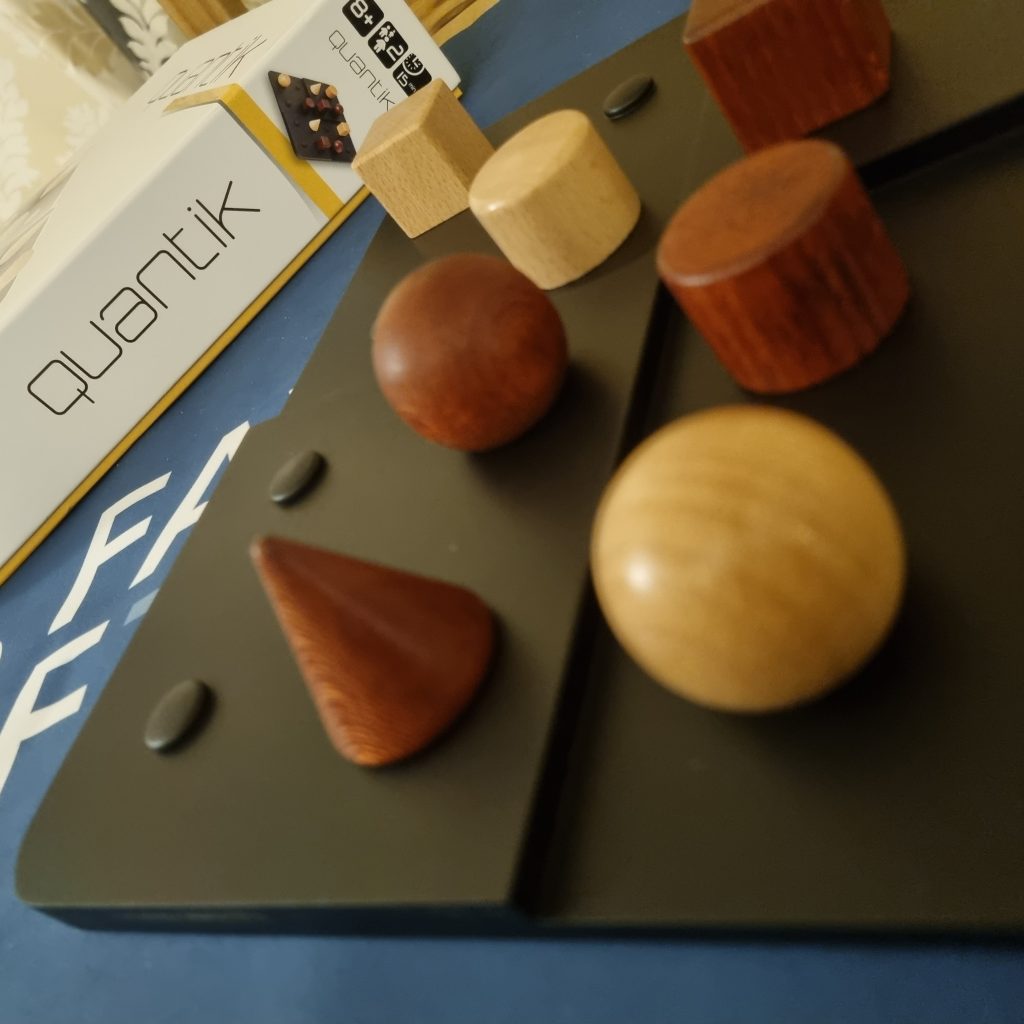
Meta puzzle gaming time in Quantik! A little like its chunky cousin, Quarto, you can win Quantik by placing 4 unique shaped pieces in a row. Unlike Quarto, however, you can also win by placing 4 different shapes in a square or a column on the 4 x 4 board.
Using a piece of your chosen colour, you take it in turns to place each one somewhere you think will force your opponent to place their own pieces right where you need them.
But it is so easy to snooker yourself when thinking simultaneously about grids and lines all within a larger grid pattern. It’s also easy to miss your own victory when concentrating on one aspect of your spatial strategy!
To me, it feels a bit like a tactile, semi-cooperative but ultimately competitive Su Doku puzzle….except without the numbers…..or the writing……ok, so not like a Su Doku puzzle at all in fact, but you get what I mean….right? ? Again Quantik plays super-fast and is another feast for the eyes as well as the hands.
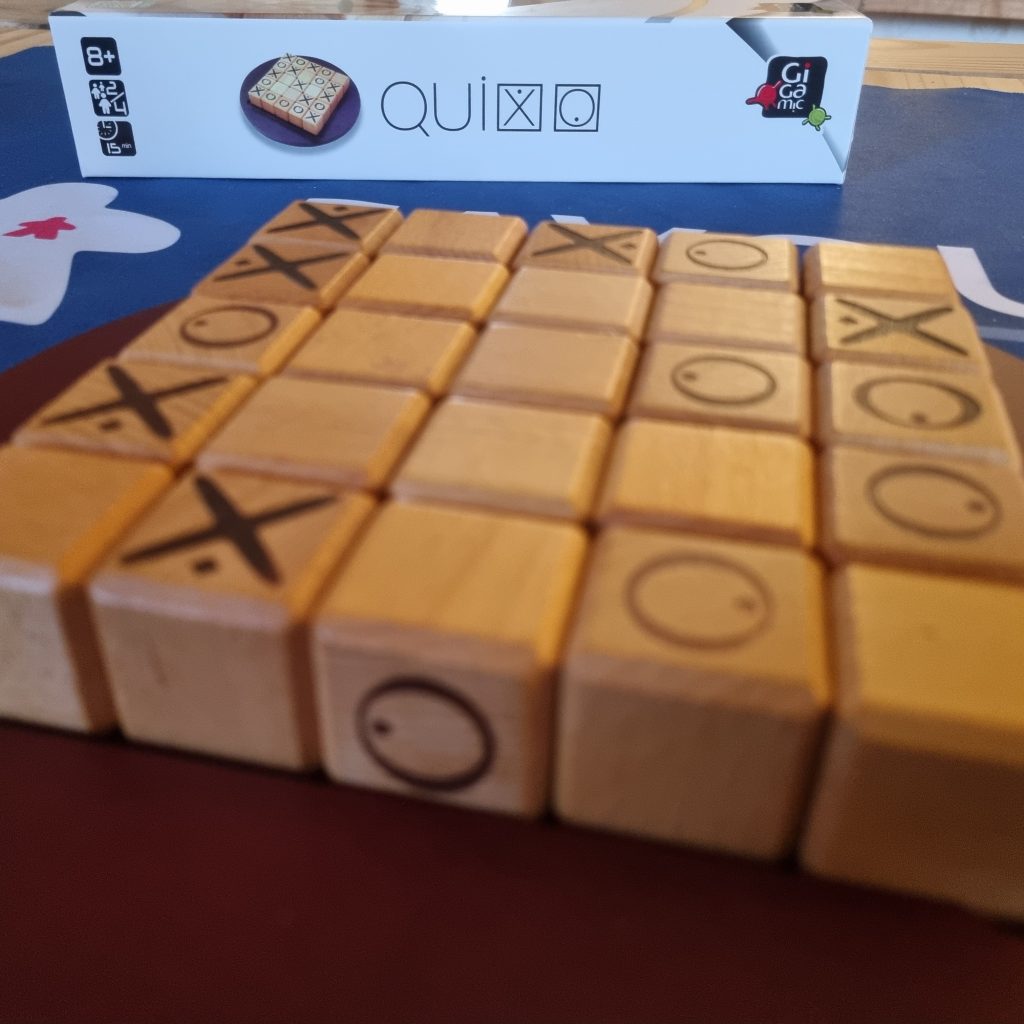
Xs and Os. No, not kisses and hugs (I’m far too ancient for all that kids’ speak!). I mean noughts and crosses. But Quixo isn’t just your common or garden scrap of paper version, the one you play with your gran on the bus.
In Quixo, you have a beautiful wooden circular board housing a 5 x 5 grid inset and filled with 25 cubes that are smooth, solid, and just beg to be held. Each cube shows a circle on one side and a cross on the opposite, although they all start off showing a blank face. On your turn, you select a cube from the outside edge (not the middle 9) that is either blank or showing your symbol, rotate it (if it was originally blank), and then slide it back into one end of the row or columns left with a space to fill. If you get 5 of your symbols in a row (orthogonally or diagonally), you win!
As with all of the Gigamic games in this range, the rules are simple. This one feels especially so as traditional noughts and crosses is such a familiar puzzle. But there’s more crunch to this cubey delight than I expected. With rows changing when blocks are picked and then slid back in from different angles, the board is a dynamic playing space that can work both for and against you. And, like other brilliant strategy games, the chance to snooker your opponent and force them to place their cube right where you want it is there if you can see it!
Strangely, unlike most games where familiarity breeds speed, the more we play Quixo, the longer we take. It’s like we are now hunting for the sweeter taste of victory won at the expense of the other player (rather than just whipping through and sneaking through 5 of our own symbols).
And, unlike many pure abstract strategy games (and the original), this has a team variant where up to 4 can play. You may have noticed the small dots on the cubes not previously mentioned. Well, in the team version, each member of a team sits on an opposite side of the board. Then on your turn, you can only select a cube where the dot is on the side closer to you than your teammate. We have only played the team version once so far, but we really liked it. Seeing the cube you need, but being on the wrong side of the board to take it (and knowing that you are just about to change the landscape again), is a step up on the tension ladder! In fact, we might actually try out a two player team variant where we each play two sides, alternating between them both, to see what happens……I am excited already!!!
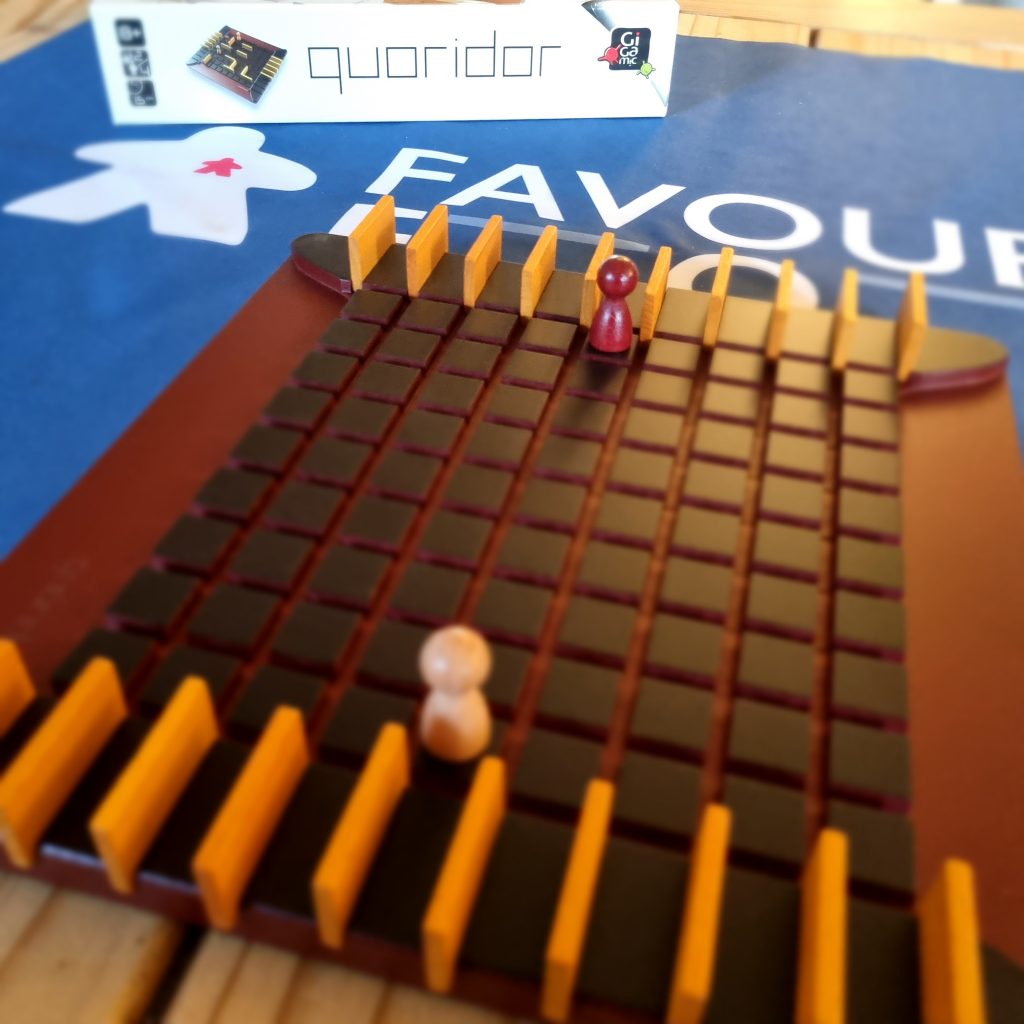
Another abstract strategy game with a team variant, Quoridor is a fine example of the simple to learn hard to master game play. In it, you need to get your pawn to the opposite side of the board. Just one pawn and just once across the board. But so is your opposing number. And you don’t want them to get there first. So each turn you get to choose whether to (a) advance your pawn one space orthogonally or (b) erect a wall. Walls can slow your opponent down, but you mustn’t dead-end them completely. And that’s it. Nothing complicated, but something surprisingly crunchy!
Like a game of cat and mouse, where you’re each playing the cat as well as the mouse, but in fact there are neither cats nor mice, this is a thinky race. And yet it is not always a race. I sometimes focus on trying to shorten my own journey time, but others it’s more about sending my opponent down longer paths. In fact it is more like a labyrinth, where you think you can see the exit from the mind maddening maze, and then it flip reverses on you again!
I would say that when one of us wins in Quoridor, the other (usually me!) is usually nowhere near their destination thanks to some wiley wall placement. Needless to say, we play this game (like the others in fact) with meanness cranked up to max which is our favourite way to play!
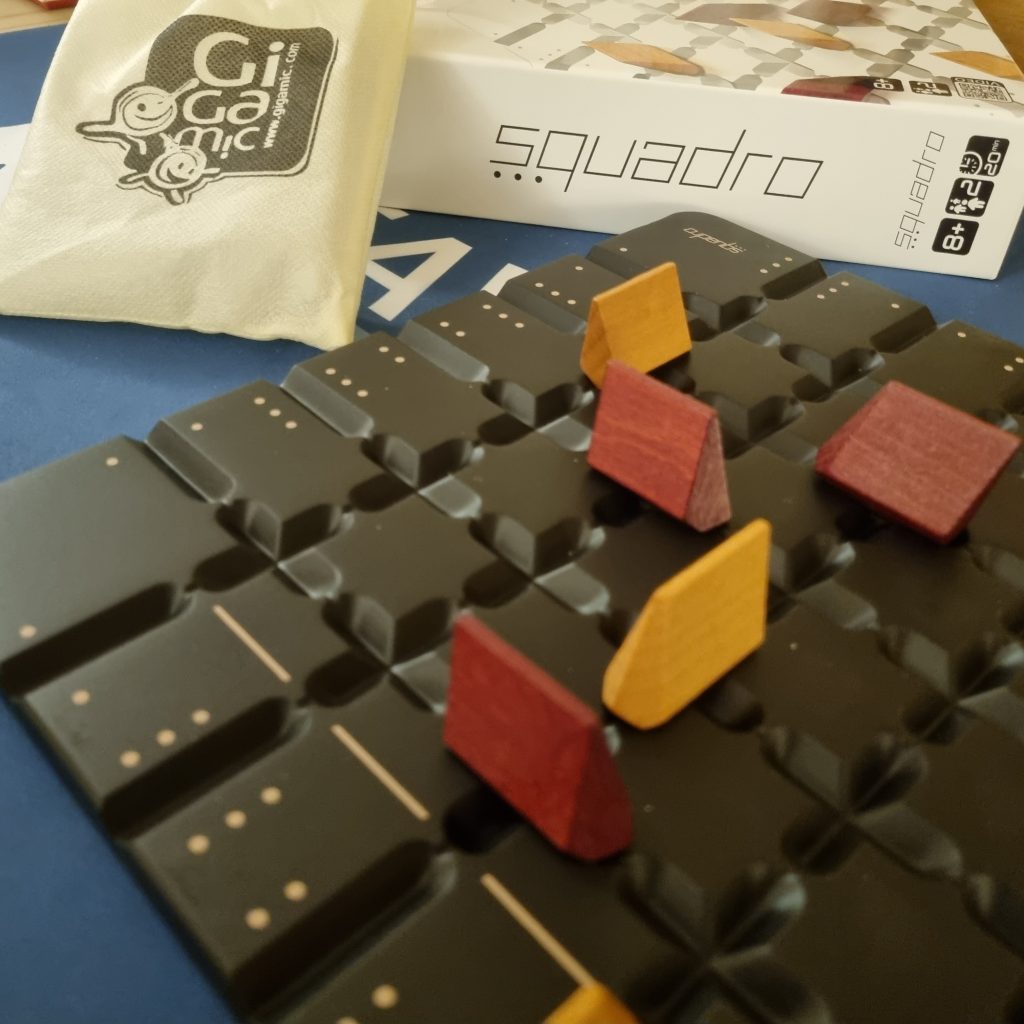
There and back. 4 out of 5 pieces going across the board and coming back again. In straight lines. That’s all it takes to win Squadro. But not so easy when you don’t set the pace, or have any say over the pattern for moving your pieces! Oh, that’s even before you realise your opponents can send your ships back to their starting docks. Yep, should one of theirs sail over the top of one of yours en-route to their own side of the board, your boat is going to be backtracking like a boss, and they get to advance one space ahead of your recently vacated space…..dang!
(NB: they aren’t technically ships but to me they look like little ships traversing the wooden waves so I am going to name them such for the purposes of this feature!)
So how do you get yourself out of this prickly predicament? Strategy of course! Each dock shows how many spaces each ship can move every turn (1,2 or 3), and this switches up in the second half as the opposite ends of the board show different speed “strengths”. Essentially it’s down to you to predict where your opponent might go next (so that you can avoid putting yourself somewhere hopping over worthy), look for opportunities to sail their own ships back, and race back to home base with four of your wooden wave riders before they get the chance! Not much to think about then! Haha
So far, I have seen my ships sent back more times than they have reached the finish line first. But that’s okay because I know my husband is a master of spatial strategy! Plus, even when I’m losing like a three legged horse in the Derby Stakes, I have something stunning to look at and hold.
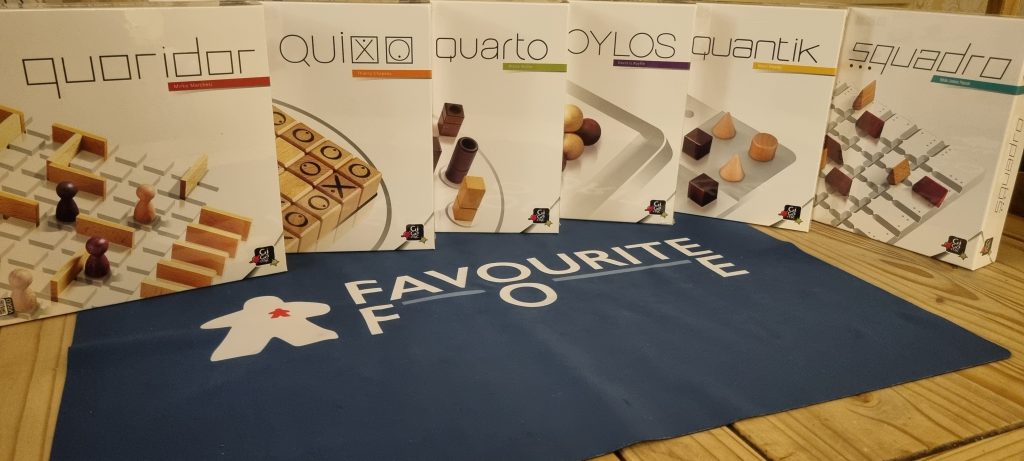
FINAL THOUGHTS!
There you have it. 6 abstract strategy games. 6 beautiful wooden sculptures. 6 reasons to jump head first into the Gigamic range! We are loving the series, particularly as they are all need slightly different ways of thinking and looking at the game space.
And there is no point knocking points off for theme (or lack of it) because that’s not what these games are about. They are pure abstract strategy games – elegant exercises in tactical thinking (although if you like a little more colour to your abstracts, check out Aqualin which is another great, fast playing title). Besides, they make up for it by containing pieces I want to take away from the table and parse like wooden stress balls!
Plus, given that they are all essentially pick up and play (and pick up you will most definitely want to!), and run no longer than around 15 minutes also means that we can get a quick hit with almost zero set up time.
I’ll be the first to admit that I am not the best at spatial puzzles or thinking too many moves ahead (my AP kicks in way before then!), but I love the challenge these games present. And when I play them and win (or lose less spectacularly!), I not only have fun, but I feel like I am improving as a gamer. I’m also not going to deny it; seeing them stacked up on my shelf in their co-ordinated boxes is undeniably satisfying.
I should also mention two things; Firstly, we have a 6 year old and we have found these games to be so easy to learn that he can play them without modifying or softening the rule set; double thumbs up for accessibility as well as encouraging good sportsmanship. Gold stars all round also for being a wonderful tactile and visual way for him to learn a key skill; thinking ahead. Looking at the space and predicting moves in different contexts without being overwhelmed by masses of components and mechanics. But don’t be fooled by the simplicity of the rules; these pack a fast and powerful strategic hit. Dial the hatey-play up or down to suit; the range is a hit with each of us on different levels.
Secondly, whilst the big, chunky, solid versions of these abstract games are definitely table talking points, each one also comes in a “mini” version that’s ideal for travelling. Portable puzzles that delight both the eye and the mind; what more could you ask for?! Well, maybe one more thing……GIANT versions of the same games! Honestly, I kid you not! Next time you’re at a convention, head over to the Hachette Board Games UK stand to see those big beauties in action!
[Please note that a copy of this game was kindly provided by the publishers for review. I am not paid for my comments, however, and all opinions are my own].

